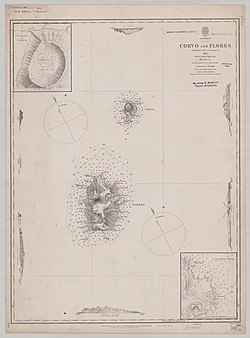Western Group | |
|---|---|
Island Group | |
 Nautical chart of Flores and Corvo | |
| Country | |
| Autonomous Region | |
| Region | Atlantic Ocean |
| Subregion | Mid-Atlantic Ridge |
| Position | Azores Plateau |
| Time zone | UTC−1 (AZOT) |
| • Summer (DST) | AZOST (UTC) |
The Western Group is one of the island groups of the Azores, Portugal. [1] [2] It comprises the islands of Flores and Corvo, situated on the North American Continental Plate of the Mid-Atlantic Ridge.
